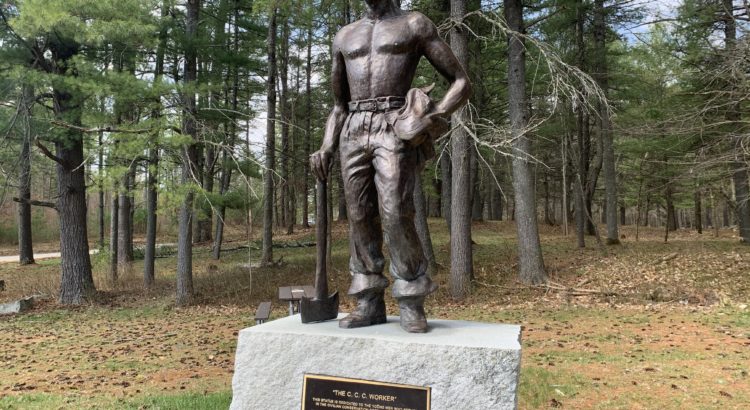Tracy Lyons – SCA NH Corps – Discover the Power of Parks Interpretive Ranger New Hampshire is a state filled with incredible nature. There are adventures to go on all over the state from kayaking at White Lake, to camping at Greenfield, or even climbing Mount Monadnock. While you’re exploring all that New Hampshire has […]
Category: Discover the Power of Parks
Discover the Power of Parks is presented by New Hampshire State Parks in collaboration with the Student Conservation Association and made possible by generous financial support from Eversource. The program offers a look into the natural world through hands-on programming. Interpretive programs focus on connecting participants with nature and building appreciation for New Hampshire’s unmatched natural heritage. Programs include guided hikes, interpretive tours, and imaginative environmental workshops for children and families. Programs are offered free to guests with paid park admission fee. No pre-registration is required.

Self-Guided Hike at Pawtuckaway State Park
Matthew Galvin – SCA NH Corps – Discover the Power of Parks Interpretive Ranger Interested in beavers, trees, or rocks? This is the short interpretive hike for you! Before I dive into the specifics of the hike, I must mention that Pawtuckaway State Park has three entrances. This hike starts at the Round Pond Road […]

Mindfulness: A Beginner’s Guide to Mindfulness in Everyday Life and in the Parks
Kayla Drake — Discover the Power of Parks Interpretive Ranger — SCA NH Corps Mindfulness calls to mind an image of someone seated cross-legged, silent except for the occasional “ohm” slipping from their lips. But mindfulness does not have to look like this; it can easily become a part of your everyday life and your […]

A Field Trip to Bear Brook State Park
If you’ve ever been to Bear Brook State Park, you know it’s a pretty special place. The SCA Digital Educator Naturalists have been living in Bear Brook since January, and they’ve gotten to know the park pretty well. To help you explore Bear Brook State Park a little more, they’ve created a digital field trip to Bear Brook, with videos visiting the park’s forests, wetlands, and CCC museum. Our field trip guide also includes suggested activities you can do at home, in your own backyard, or on a visit to Bear Brook.

Bird Songs of Spring
Often when we’re waiting for spring, we are looking for warm weather and wildflowers as our first marker that the season has arrived. But there’s another sign of spring in the air: birdsong! While some birds stay in New Hampshire all winter, others are just now returning to us after wintering further south. Here are a few migrants you can expect to see around New Hampshire now! We’ve included recordings of their calls as well as pictures–if you’re interested in birding, learning even just a few bird calls is a great way to get started.

Everyone’s Favorite – The Beaver
As aquatic animals, beavers spend most of their time in the water. They are proficient swimmers, and can remain underwater for up to 15 minutes at a time. Beavers’ skills in the water make up for their relative clumsiness on land, and helps to keep them safe from the threat of predation.

The Civilian Conservation Corps at Bear Brook State Park
Bear Brook is home to one of the only Civilian Conservation Corps camps left standing in the US. Also known as the CCC, the Civilian Conservation Corps was created by President Franklin Roosevelt in response to the Great Depression’s effect on the American economy.

7 Tips for Leaving No Trace at New Hampshire Parks
As we get closer to the summer months, and more outdoor adventurers begin visiting New Hampshire State Parks, it’s a great time to refresh on Leave No Trace (LNT) principles. Here are 7 tips to get the most out of your time at New Hampshire State Parks, while protecting our natural resources!

Watersheds
All of our New Hampshire rivers have their own unique watersheds, and the rain that falls on the land in that watershed drains into a specific waterway. Learn more about watersheds and why they’re important through this lesson!

Tidepooling
Tide pools are a unique ecosystem that you can find in rocky coastal areas. Learn more about some of the creatures that make their homes in tide pools through this narrated Powerpoint–and maybe you can use this to help plan your next seacoast trip!

